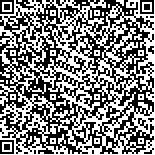| 王晓光,宋政炜,倪全法.新型纳米探针检测血浆K-ras基因突变与胰腺癌根治术后复发的关系研究[J].肿瘤学杂志,2018,24(1):47-50. |
| 新型纳米探针检测血浆K-ras基因突变与胰腺癌根治术后复发的关系研究 |
| Relationship Between Recurrence Following Curative Resection of Pancreatic Cancer and K-ras Mutations in Plasma Detected by Novel Nano Probe |
| 投稿时间:2017-04-18 |
| DOI:10.11735/j.issn.1671-170X.2018.01.B010 |
|
 |
| 中文关键词: 胰腺癌 复发 突变 磁性纳米粒子 |
| 英文关键词:pancreatic cancer recurrence mutation magnetic nanoparticles. |
| 基金项目:浙江省科技厅公益技术研究社会发展项目(2014C33139) |
|
| 摘要点击次数: 2063 |
| 全文下载次数: 822 |
| 中文摘要: |
| 摘 要:[目的] 建立纳米捕获探针体系检测血浆中K-ras基因突变的方法,并探讨K-ras基因单核苷酸多态性突变与胰腺癌根治术后复发及预后的关系。[方法] 收集2013年1月至2016年1月收治的胰腺癌根治性切除患者51例,抽提外周血DNA,应用特异性纳米捕获探针检测K-ras基因12、13位点密码子突变,通过Kaplan-Meier生存分析,评估K-ras基因点突变对胰腺癌根治术后复发及预后的影响。[结果] 51例胰腺癌根治术患者K-ras基因突变率为35.3%(18/51),K-ras突变与淋巴结转移、神经侵犯有显著性相关(P=0.002、P=0.004)。通过随访分析K-ras基因突变者1年、2年累积无瘤生存率为41.3%、0%,K-ras基因野生型1年、2年累积无瘤生存率为66.3%、14.4%,差异有统计学意义(P=0.042、P=0.008);K-ras基因突变者1年累积总体生存率为81.1%,野生型为93.5%,差异无统计学意义(P=0.203),而K-ras基因突变者2年累积总体生存率为11.7%,野生型为26.4%,差异有统计学意义(P=0.035)。[结论] 纳米捕获探针体系能够快速痕量检测血浆中K-ras基因突变,其与胰腺癌的淋巴结转移、神经侵犯密切相关,可作为判断胰腺癌根治术后患者无瘤生存期的一个重要指标。 |
| 英文摘要: |
| Abstract:[Objective] To establish a method of detection K-ras mutations in plasma by a nano capture probe system,and to explore the relationship between recurrence or prognosis following curative resection of pancreatic and K-ras single nucleotide polymorphism mutations. [Methods] The plasma samples of 51 patients with pancreatic cancer who underwent curative resection were collected from January 2013 to January 2016. The DNA were extracted from all plasma samples and were detected for the codon 12 and 13 mutation of K-ras gene by nano capture probe. The effect of K-ras gene point mutations on recurrence and prognosis following curative resection of pancreatic cancer was assessed by the Kaplan-Meier survival analysis. [Results] The total K-ras mutation rate of pancreatic cancer patients was 35.3%(18/51). There were significant correlation between K-ras gene mutation and lymph node metastasis and neural invasion(P=0.002,P=0.004). The cumulative one-year and two-year actuarial recurrence free survival rates of patients with K-ras mutation were 41.3% and 0%,and the cumulative one-year and two-year actuarial recurrence free survival rates of patients with wild genotype were 66.3% and 14.4%,the differences are statistically significant(P=0.042,P=0.008). The cumulative one-year overall survival rate of patients with K-ras mutation was 81.8%,the rate of K-ras wild genotype was 93.5%,there was no difference in statistics(P=0.203). The cumulative two-year overall survival rate of patients with K-ras mutation was 11.7%,the rate of K-ras wild genotype was 26.4%,the difference was statistically significant(P=0.035). [Conclusion] The nano capture probe system could certainly detect K-ras mutation in rare plasma DNA. K-ras mutation in plasma is related to lymph node metastasis and neural invasion of pancreatic cancer,and K-ras mutation in plasma DNA is a predictive biomarker for disease-free survival after surgery for pancreatic cancer. |
|
在线阅读
查看全文 查看/发表评论 下载PDF阅读器 |